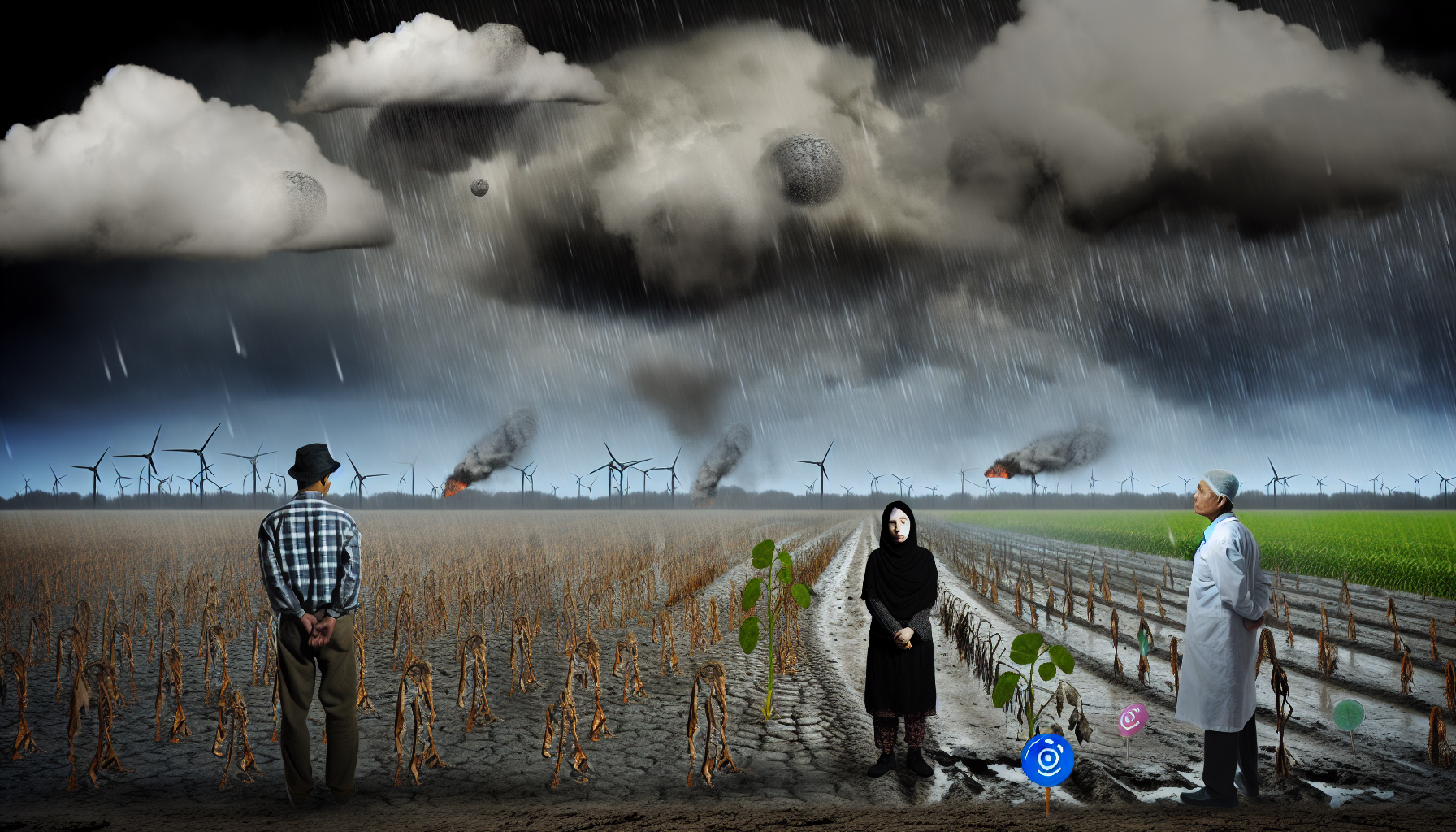In a world where the sky weeps with a sooty tears, our land bears the burden of a stark reality—our fertile soils now feast upon ashen rain. Once vermilion sunsets now cloak themselves under a perpetual gray mantle, and the green of our past is just that, a memory of the past.
Resilience or despair? The landscape, dappled with layers of volcanic ash, could easily be mistaken for an alien terrain. And yet, these gray blankets serve as a paradox, enriching soils with minerals and enabling peculiar cultivars of crops to take root. In a landscape akin to living under a sullen god’s shadow, the resilience of nature crafts an odd tableau of survival and surrender.
Casting a glance at our recent article ‘Ashen Skies – The Eerie Beauty of a Life Under Volcanic Shadows‘, one cannot help but see the juxtaposition of these realities: the romanticism of ‘eerie beauty’ now confronts the blunt truth of ‘ashen rain.’
Indeed, farmers whisper paradoxes here, questioning nature’s twisted bounty. “A single eruption,” mutters an old-timer, “gifts us years of fertile soils, and yet curses us with a summer without sun.” These whispered confessions echo through the fields, blending with the soft hiss of falling ash. Perhaps in these murmurs lies the dissonant chorus of our era, an age when life itself clings to paradoxes.
The Science Beneath the Gray
Scientists solemnly confirm what these ragged landscapes exhibit: the metallic taste of our air betrays the iron, magnesium, and potassium our earth now eats. A geologist elucidates, “Volcanic ash often contains minerals that are beneficial to plants. It’s nature’s ironic fertilizer.” Thus, amid environmental collapse, volcanic ash acts as a lifeline—an emblem of life clinging to an indifferent universe.
The macabre irony here is substantial: out of earth’s violent convulsions emerges an unexpected savior for agriculture. Crops uniquely adapted to this environment could very well hold the key to sustained food production, if not survival, in a climatically unsettled future.
And yet, this ‘gray gold’ is not without its cruel counterside. Respiration ailments escalate as ash-laden air permeates poverty-stricken areas, and water sources taint with murky whispers of their own—transformed by ash-carrying rivulets.
The currency of this ecological paradox is as darkly comical as it is tragic; it’s a world where respirators become as common as raincoats.
The Volcanic Garden: Growing Resistance or Defiant Respite?
One agriculturist, face lined with the shadows of her labor, speaks of the success in growing a strain of tubers resistant to ash. “They’re hardy,” she declares, “and in this new world of ours, we need crops just as stubborn as we are.” This stark expressiveness—a marriage of forceful determination with stoic acceptance—characterizes our collective hope in a future where the odds seem eerily stacked against us.
In the heart of this turmoil, the enigmatic beauty of an ashen garden brings an odd comfort. Buffered against the relentless gray scale, vibrant hues of these robust crops wage a silent but vivid rebellion against the muted tones suffusing the earth.
The Circle of Ash
Our narrative converges with nature’s persistent cycle. The ash that blankets and chokes also nourishes and begets. It weaves a grim tapestry that belies underlying richness; a vicious cycle of destruction and regrowth—a relentless phoenix of agriculture in a crumbling world.
Where do we stand in this cycle? Can ashen rain truly feed a dying earth, or is it merely a placebo for a planet gasping its final breaths?
We tread gingerly, on cinder and seed, somewhere between accepting our fleeting victories and awaiting the inevitable reclamation by nature in its most ruthless form. We are the children of the ashen rain, harvesting paradoxes—destined to bloom amongst the ruins, or wither in the shadows of the gray.
